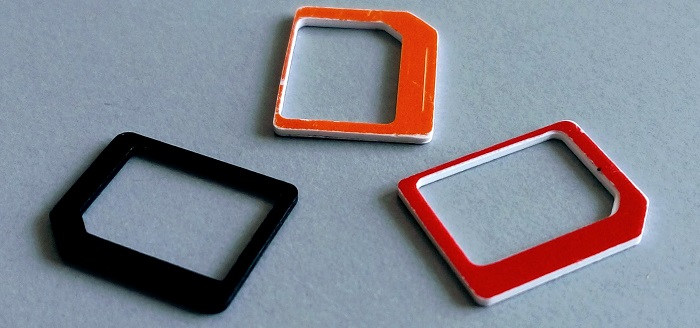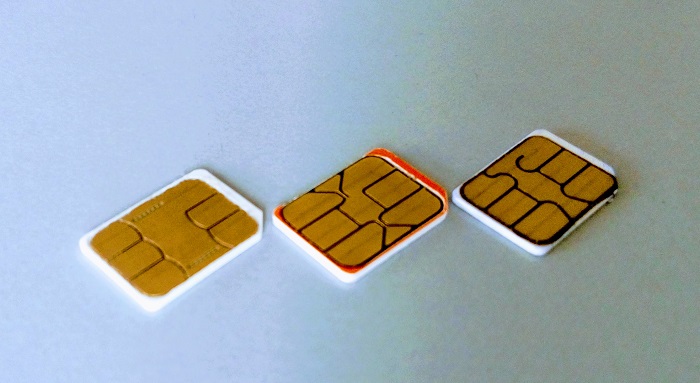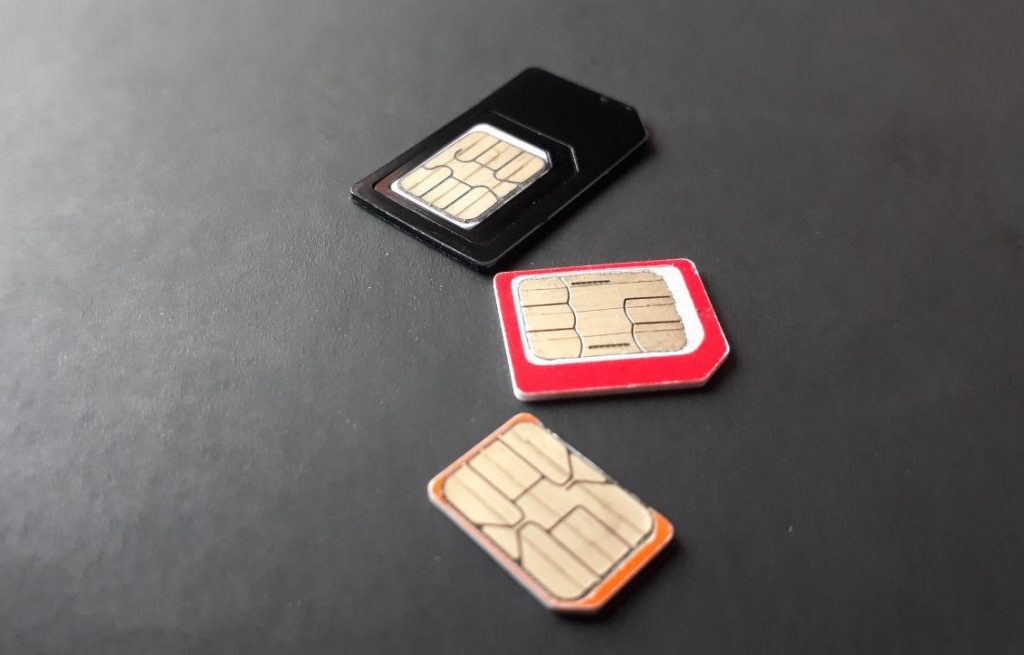What’s a phone without a SIM card? Those small invaluable chips store messages and contacts depending on the capacity of the SIM card. SIM cards come in memory capacities of 32K, 64K, 128K and now even 256K. These can store anywhere from 250 to 500 contacts and more and a small number of messages to boot. The options you have are Mini-SIM vs Micro-SIM vs Nano-SIM vs Embedded-SIM/eSIM.
As Smartphones get slimmer with every release, something’s gotta give. Many manufacturers are completely getting rid of audio jacks. They now also make dual-purpose Micro-SIM/SD card racks. Let’s have a look at the SIM card formats in use today in all manner of devices, from feature phones to the latest cutting-edge iPhone/Samsung Galaxy.
In truth, the first SIM was actually the size of a credit card. They measured 85.60 mm × 53.98 mm × 0.76 mm. We have not included this SIM format because it’s really old and most people don’t even remember a time it was in use. For this reason, we will start with its successor, the Mini-SIM.
Mini-SIM

SIM cards of yonderyear came in one standard format: The Mini-SIM. The Mini-SIM is still the most popular SIM format although things are changing. This format measures 25 mm x 15 mm x 0.76 mm in size.
Mini-SIMs can be one solid block or ringed in layers like an onion housing various SIM frame formats (Micro-SIM/Nano-SIM). Mini-SIMs are mostly used in basic feature phones.
Micro-SIM

The Micro-SIM is a size smaller than the Micro-SIM. It has the dimensions 15 mm x 12 mm x 0.76 mm. Most current smartphones use this format. It makes more sense, once you consider that many smartphones now come with dual SIM slots.
A Micro-SIM can have an onion ring frame encasing the next format, the Nano-SIM. The iPhone 4 was the first smartphone to use a micro-SIM when it launched in June 2010. Other manufacturers soon followed suit.
Nano-SIM

The Nano-SIM is the smallest variant once you have peeled away the onion rings framing the SIM card formats from Mini-SIM inward. It measures 12.3 x 8.8 x 0.67 mm in size, slightly thinner than the Micro-SIM and Mini-SIM. Like its predecessor, the iPhone 5 was the first device to use a nano-SIM card in September 2012, followed by other manufacturers.
Currently, all versions of the iPhone since iPhone 5 use Nano-SIM. Most newer brands of major smartphone manufacturers, including Samsung, HTC, Sony, Lenovo, Motorola, Xiaomi, Oppo, e.t.c come with Nano-SIM.
Embedded-SIM/eSIM
The eSIM, also known as the Embedded-SIM is a new SIM card standard being promoted by GSMA, the association representing network operators worldwide. What is interesting to note about e-SIM is that it’s a non-replaceable integrated SIM chip soldered onto a device’s circuit board.
Given their nature, information on e-SIMs is rewritable. What this means is that you can easily change your service provider without having to go to an outlet to buy a new SIM card! What’s more, phone manufacturers will have leeway to design even thinner smartphones in the years to come.
The front-runners to adopt eSIM, obviously are Apple, Samsung and Google, to name a few. These phone manufacturers are in talks with major network providers to adopt e-SIM cards in their future devices. Currently, Samsung and Apple already have eSIM enabled devices i.e Samsung’s Gear S2 3G, and Apple Watch Series 3. It’s only a matter of time before they achieve mass adoption.
So that’s about it. These are your options: Mini-SIM vs Micro-SIM vs Nano-SIM vs Embedded-SIM/eSIM. So then, what SIM card format works best for you?













2 thoughts on “SIM card formats: Mini-SIM vs Micro-SIM vs Nano-SIM vs Embedded-SIM/eSIM”